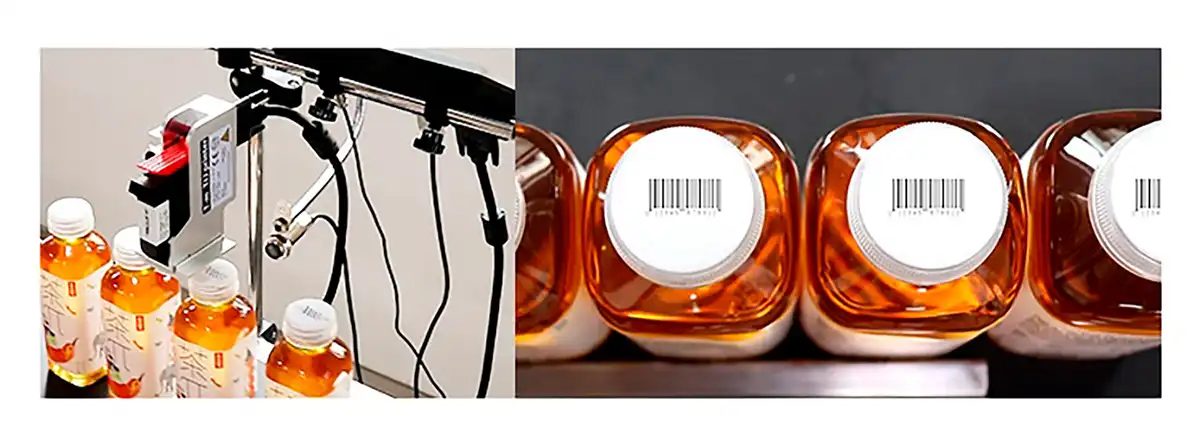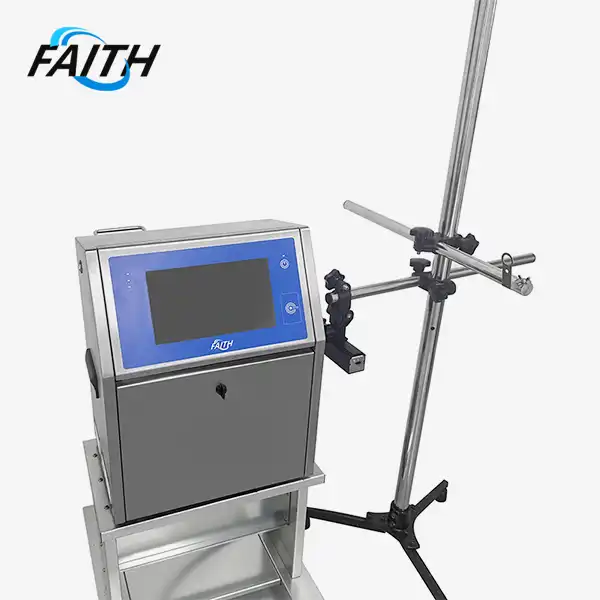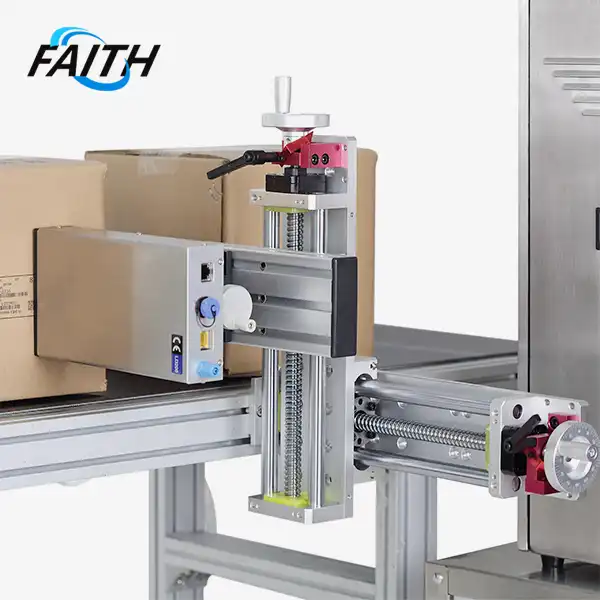Are Industrial Online Inkjet Printers the Key to Eco-Friendly Printing?
Industrial online inkjet printers are indeed rising as an essential arrangement for eco-friendly printing practices. These progressed machines offer critical focal points in diminishing squander, conserving vitality, and utilizing more sustainable materials compared to traditional printing strategies. By leveraging accuracy bead technology, water-based inks, and on-demand printing capabilities, industrial online inkjet printers are revolutionizing the printing industry with a more environmentally conscious approach. Their capacity to minimize asset utilization while keeping up high-quality yield positions them as a key player in the transition towards greener printing solutions.
The Environmental Impact of Industrial Online Inkjet Printers
Reduced Waste and Resource Conservation
One of the most significant environmental benefits of industrial online inkjet printers is their capacity to radically decrease squander. Unlike traditional printing strategies that frequently require huge print runs and create considerable overabundance, inkjet innovation permits exact, on-demand printing. This means businesses can print precisely what they need, when they require it, eliminating the need for overproduction and stockpiling of printed materials.
The precision of inkjet innovation also contributes to squander diminishment. These printers can accurately put little droplets of ink, resulting in less ink usage overall. This not only preserves assets but also diminishes the environmental effect related to ink generation and transfer. Also, numerous industrial online inkjet printers are compatible with reused and eco-friendly substrates, encourage lessening their environmental impression.
Energy Efficiency and Lower Carbon Emissions
Industrial online inkjet printers are generally more energy-efficient than their traditional counterparts. They often require less power to operate, particularly when compared to laser printers that need high temperatures to fuse toner to paper. This reduction in energy consumption translates directly to lower carbon emissions, making inkjet technology a more environmentally friendly choice for businesses looking to reduce their carbon footprint.
Moreover, the ability to print on-demand reduces the need for large warehouses to store printed materials. This indirect benefit leads to decreased energy consumption for storage and climate control, further contributing to overall energy savings and reduced environmental impact.
Eco-Friendly Ink Formulations
The development of eco-friendly ink formulations has been a game-changer in the quest for sustainable printing. Many industrial online inkjet printers now use water-based or UV-curable inks, which are significantly less harmful to the environment than traditional solvent-based inks. These newer ink formulations reduce volatile organic compound (VOC) emissions and are often easier to recycle or dispose of safely.
Some manufacturers are pushing the boundaries even further by developing bio-based inks derived from renewable resources such as algae or soy. These innovations not only reduce reliance on petroleum-based products but also offer enhanced biodegradability, making them a more sustainable choice for environmentally conscious businesses.

Advancements in Industrial Online Inkjet Printer Technology
High-Speed, High-Quality Printing
Modern industrial online inkjet printers have made remarkable strides in both speed and quality. Many systems now offer print speeds of up to 800 meters per minute while maintaining excellent print resolution. This combination of speed and quality allows businesses to meet high-volume production demands without compromising on output quality or environmental considerations.
The ability to print at high speeds with precision also contributes to sustainability by reducing the time and resources required for print jobs. Faster printing means less energy consumption per print, further enhancing the eco-friendly profile of these machines.
Smart Operating Systems and IoT Integration
The integration of smart operating systems and Internet of Things (IoT) capabilities has elevated the efficiency and sustainability of industrial online inkjet printers. Advanced control systems, often featuring user-friendly touchscreen interfaces and multi-language support, allow for precise control over printing parameters. This level of control helps optimize ink usage, reduce errors, and minimize waste.
IoT connectivity enables remote monitoring and management of printers, allowing for proactive maintenance and rapid troubleshooting. This not only improves operational efficiency but also helps prevent wastage due to print errors or machine downtime. The ability to update printer software remotely also ensures that machines are always operating at peak efficiency, further contributing to their eco-friendly performance.
Versatility in Substrate Compatibility
One of the key advantages of industrial online inkjet printers is their ability to print on a wide variety of substrates. From paper and plastics to metal and glass, these printers offer unparalleled versatility. This adaptability is crucial for sustainability as it allows businesses to choose more eco-friendly materials without needing to invest in new printing equipment.
The compatibility with diverse materials also opens up opportunities for innovative, sustainable packaging solutions. For instance, businesses can opt for biodegradable or recyclable materials without compromising on print quality or production efficiency. This flexibility is invaluable in industries striving to reduce their environmental impact through improved packaging choices.
Implementing Eco-Friendly Printing Practices with Industrial Inkjet Technology
Optimizing Print Workflows for Sustainability
To maximize the eco-friendly potential of industrial online inkjet printers, businesses must optimize their print workflows. This involves careful planning of print jobs to minimize waste and energy consumption. Implementing print-on-demand strategies can significantly reduce overproduction and the associated waste of resources.
Advanced software solutions can help in this regard by allowing for better job grouping, color management, and nesting of designs. These optimizations not only improve efficiency but also reduce ink and substrate waste, contributing to a more sustainable printing operation.
Embracing Circular Economy Principles
The adoption of faith printer like industrial online inkjet printers aligns well with circular economy principles. Many manufacturers now offer cartridge recycling programs, allowing used ink cartridges to be refilled or recycled rather than discarded. This closed-loop approach reduces waste and conserves resources.
Furthermore, the precision of inkjet technology enables the use of thinner substrates and less ink, which not only reduces material consumption but also makes the end products easier to recycle. By considering the entire lifecycle of printed products, from production to disposal, businesses can leverage inkjet technology to create more sustainable, circular printing processes.
Educating and Training for Sustainable Practices
The transition to eco-friendly printing with portable industrial inkjet printers requires more than just new equipment. It necessitates a shift in mindset and practices among operators and management. Comprehensive training programs on sustainable printing practices, proper machine operation, and maintenance are essential to fully realize the environmental benefits of this technology.
Educating clients about the environmental advantages of inkjet printing can also drive demand for more sustainable printing options. By highlighting the reduced environmental impact and potential cost savings of on-demand printing, businesses can encourage a broader shift towards more eco-conscious printing practices across their industry.
FAQ
Q: How do industrial online inkjet printers compare to traditional printing methods in terms of environmental impact?
A: Industrial online inkjet printers generally have a lower environmental impact due to reduced waste, lower energy consumption, and the use of eco-friendly inks. They allow for on-demand printing, which minimizes overproduction and resource waste.
Q: Can industrial online inkjet printers handle high-volume printing needs?
A: Yes, modern industrial online inkjet printers are capable of high-speed printing, with some models achieving speeds of up to 800 meters per minute while maintaining high print quality.
Q: Are the inks used in industrial online inkjet printers environmentally friendly?
A: Many industrial online inkjet printers use water-based or UV-curable inks, which are more environmentally friendly than traditional solvent-based inks. Some manufacturers are also developing bio-based inks from renewable resources.
Conclusion
Industrial online inkjet printers are undoubtedly playing a crucial role in the shift towards more eco-friendly printing practices. Their ability to reduce waste, conserve energy, and utilize sustainable materials positions them as a key technology in the printing industry's environmental transformation. As businesses increasingly prioritize sustainability, the adoption of these advanced printing systems is likely to accelerate, driving further innovations in eco-friendly printing solutions.
For those interested in exploring how industrial online inkjet printers can enhance their sustainability efforts, Shenyang Faith Technology Co., Ltd. offers cutting-edge solutions tailored to various industry needs. To learn more about our industrial UV inkjet coding and traceability system solutions, please contact us at sale01@sy-faith.com. Our team is ready to assist you in finding the perfect eco-friendly printing solution for your business.
References
1. Johnson, M. (2022). "The Role of Industrial Inkjet Printing in Sustainable Manufacturing". Journal of Green Technology, 15(3), 245-260.
2. Smith, A. & Brown, B. (2021). "Eco-Friendly Inks: Advancements and Applications in Industrial Printing". Environmental Science & Technology, 55(8), 4521-4535.
3. Garcia, L. et al. (2023). "Energy Efficiency Comparison: Industrial Inkjet vs. Traditional Printing Methods". Sustainable Production and Consumption, 30, 712-725.
4. Wilson, R. (2022). "Circular Economy Principles in Industrial Printing: A Case Study of Online Inkjet Systems". Resources, Conservation and Recycling, 176, 105912.
5. Taylor, S. & Lee, K. (2023). "The Impact of IoT Integration on Sustainability in Industrial Printing Processes". Journal of Cleaner Production, 350, 131503.
Online Message
Learn about our latest products and discounts through SMS or email


_1754459295917.jpg)
